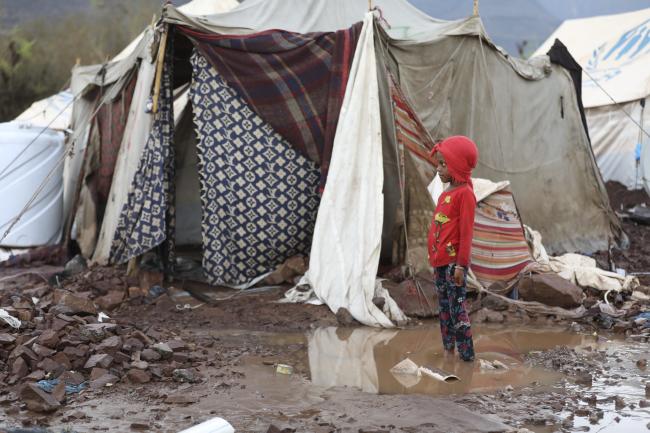The climate missing: a new frontier in missing persons

By Simon Robins
Extensive experience working with, and supporting, families of the missing has shown that in almost all circumstances the ambiguous loss of not knowing the fate or whereabouts of a loved one is devastating. Given the ongoing global crisis around climate change, a recent academic paper has introduced a new category of missing persons: the climate missing, suggesting that an as-yet undiscussed impact of the climate crisis might be yet more families having to live with the uncertainty of a missing relative.
The new paper identifies three casual routes through which climate change produces missing persons: natural disasters; migration and forced mobility; and social and political conflict. As such, these missing emerge in categories that overlap with existing missing persons, but the drivers of the events that precipitate their going missing are linked to the climate crisis. The paper argues that “‘climate missing’ is emerging as an unignorable side effect of shifting climatic conditions”, with the implication that more families will suffer the torment of not knowing the fate and whereabouts of their loved ones as a result. The scale of the problem is seen in events such as floods and fires that force millions of people to flee their homes each year, with almost 9 million people living in internal displacement due to disasters, according to recent data. Whilst not all disaster displacement is climate-related, as climate change continues to make extreme weather events more common and more intense, even more people are at risk of being forced to flee their homes and risk death in such disasters. The paper lists some recent examples, including hundreds missing in the aftermath of wildfires on the island of Maui, in the US state of Hawaii; over 500 missing in Malawi after being buried in a series of mudslides unleashed by the intense Cyclone Freddy; and 1,200 Bahamians still unaccounted for after 2019’s devastating Hurricane Dorian. The paper also notes that the mechanisms of migration and armed conflict that also drive numbers going missing are themselves intensified by climate change: “While climate is never the only factor in creating disappearances, it is undeniably part of a complex web of explanations for new movements of people across borders and social and political conflict.”
The paper analyses these three categories of climate-related missing. First, extreme weather events – such as tropical storms, increased rainfall and greater threats of flooding – are made more intense and frequent by a warming climate. Araos and Wolfe cite the destruction of Derna’s dams in Libya that led to thousands of dead and missing, which was exacerbated by harder soils and reduced vegetation, themselves a result of climate change. Second, climate change is linked to slower onset impacts, such as drought and increased soil salinity, which enhance hunger and poverty and drive increased migration, which is a major contemporary source of persons going missing. Third, armed conflict is seen to be exacerbated by the impacts of climate change: for example, drought, exacerbated by warming, was one factor driving the Syrian conflict, which has generated more than a hundred thousand missing.
Inequality defines where these missing will predominantly be generated, with resource-poor states of the Global South most affected, despite the climate crisis being primarily driven by carbon emissions from the rich Global North. Similarly, the technical and financial resources required to identify the dead who constitute most of the missing are concentrated in the Global North, while most unidentified human remains will be in nations of the Global South where resources of all sorts are limited. This will challenge such states to effectively manage the problem, given the limited medico-legal capacities and the resulting lack of antemortem data that can be used to identify any remains found. Araos and Wolfe argue that this places an obligation on those states that have the greatest responsibility for climate change – i.e. the rich, carbon-burning states of the Global North – to support poorer, less carbon-emitting countries, to both prevent disappearances through financing resilience and adaptation initiatives and also help resolve outstanding missing persons cases.
The paper’s authors make the point that – like climate change itself – any solution to the issue of missing persons will require global cooperation. This is particularly true for those missing in migration, where bodies are found far from the families that are missing people, and international data sharing is required. They outline an agenda to try to confront such issues, noting the need to build forensic capacities in low- and middle-income states and proposing that wealthy states finance such capacity building. They emphasise the need to prioritise both post-impact responses, to quickly resolve missing persons cases, and preventive activities, such as the construction of resilience infrastructure to mitigate the damage of climate impacts. What the paper does not mention however is the need for global political will. Even in the Global North today when migrant bodies are found on Europe’s beaches or in the deserts of Arizona, the principal reason they remain unidentified is not a lack of resources, but a lack of commitment from authorities to do so. Just as an insufficient willingness to address climate change has defined the global response to it, so a precursor to action to address the climate missing is a global acknowledgement that the issue should be addressed.



